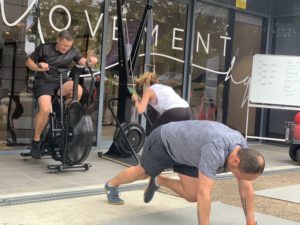Meet Tully McDonald, a new MHQ Mover who joins the allied health team at Brellah Medical, just up the stairs, on 12 April as an Osteopath.
If you’re feeling any pain or prolonged stiffness, you may find he’ll come in handy. Here’s how he can help.
What do osteopaths treat?
Alot! You name it – anything from short term pain to chronic conditions relating to the muscles, bones and joints:
- Low back pain
- Neck and shoulder pain
- Disc injuries (e.g. herniations & bulges)
- Chronic pain
- Sciatica
- Headaches & migraines
- Postural tension or tightness (e.g. desk workers)
- TMJ / Jaw pain (e.g. lock jaw & clicking discomfort)
- Hip and knee pain (e.g. trochanteric bursitis)
- Foot and ankle pain (e.g. Plantar fasciitis)
- Bursitis
- Carpal tunnel syndrome
- Epicondylitis (tennis elbow)
- Muscle strains and tendon issues (tendinopathies & tendonitis)
- Sports injuries (e.g. ankle sprains, ACL tears, meniscus tears)
- Pregnancy related pain and discomfort
- Arthritis (osteoarthritis & rheumatoid).
What’s the difference between a chiropractor, physio and osteopath?
The main difference between the three is the focus of their treatment.
Osteopaths look at the body as a whole, considering how the skeleton, joints, muscles, nerves, circulation, connective tissue, and internal organs all work together.
Chiropractors mainly focus on spinal function and correcting any problems in this area in order to help improve the overall functioning of the body.
An osteopath and a physiotherapist have the same goals: To improve your overall health and well-being. However, their approaches are quite different.
While an osteopath will use manual techniques to realign the body’s structure, a physiotherapist will focus mainly on physical activity and exercise.
Osteos strongly embrace making activity and exercise a part of your recovery.

What Tully enjoys about being an osteopath
“I thoroughly enjoy helping people return to what is important to them. Whether that’s being able to go for a long beach walk, squatting at the gym without pain or returning to sport.
I have a passion for working with patients collaboratively, treating the source of pain not just alleviating symptoms. This ensures my patients are able to return to their desired activities without pain and the recurrence of the same injury.
I treat a variety of clients ranging in age and areas of pain. I have a vested interest in working with clients who also love utilising and learning about a holistic approach to health care and exercise rehabilitation.”

More about Tully
“I grew up in Lennox Head, surfing in comfortable temperate ocean water and relocated to Sydney from Noosa Heads after living there for four years. I am more happy to be on the Northen Beaches of Sydney, where I can surf until my heart is content.
I first encountered Osteopathy after a chronic knee injury playing football as a teenager and was immediately drawn by the broad and holistic approach taken to help treat my condition.
Learning that the pain in my knee was coming from chronic postural, back and pelvic issues sparked a keen interest for me to learn about anatomy, the complexity of the human body and a determination to empower others stuck in similar situations.
Besides surfing, I love to train at the gym. Whether that is utilising functional patterning, movement strength, traditional weight training and even yoga.
I also love what Movement HQ stands for in terms of movement quality, diversity of training styles, and awesome community of members and coaches who I’ve had the pleasure to start training with. I know that we are a great fit for each other.











